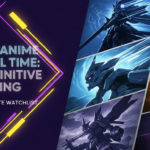Exploring the nuanced worlds of Japanese storytelling, light novels and manga stand out as two of the most captivating formats, each offering unique experiences to their audiences. But can a light novel be a manga? The question itself unveils a curiosity that bridges the gap between text-driven narratives and visually rich comic books. No, a light novel cannot “be” a manga due to fundamental differences in format and storytelling approach, but one can be adapted into the other.
Diving into this exploration will not only clarify common misconceptions but also highlight the transformative relationship between these two mediums. With an expert grasp on the subject, I aim to guide you through the intricacies of light novels and manga, shedding light on their distinct characteristics, adaptation processes, and their evolving roles in the landscape of Japanese entertainment.
Understanding Light Novels and Manga
The Essence of Light Novels and Manga
Light novels and manga cater to a wide range of audiences with their diverse storytelling techniques. A light novel typically is a prose-based narrative, often accompanied by manga-style illustrations, aiming to provide a textual depth complemented by visual aids. Manga, on the other hand, is a graphic novel format where the story unfolds through sequential art, emphasizing visual storytelling over textual narrative.
Core Differences in Format and Presentation
The fundamental differences lie not just in the format but in the engagement they seek from their audience. Light novels, with their prose and occasional illustrations, demand readers to immerse themselves in the world through words, whereas manga captivates its audience through dynamic visuals and minimal text, offering a more direct and immediate narrative experience.
The Adaptation Process: From Text to Visuals
Light Novel to Manga Adaptations
The journey from a light novel to a manga adaptation is afascinating process that involves expanding the narrative’s reach and accessibility. Publishers and authors often decide to adapt a light novel into a manga to appeal to a broader audience, especially those who prefer visual narratives over textual ones. The adaptation process carefully translates the detailed prose of light novels into engaging visual sequences that capture the essence of the story in a different medium.
Challenges and Creative Liberties
Adapting a light novel into a manga is not without its challenges. The depth of internal monologues, complex world-building, and nuanced character development found in light novels must be effectively conveyed through visuals in manga. This process allows for creative liberties where the manga artists reimagine the narrative with their artistic style, adding a new layer of interpretation to the original story.
Bridging Mediums: When Light Novels and Manga Converge
Shared Universes and Collaborative Storytelling
In some cases, light novels and manga coexist within the same universe, telling parallel stories or exploring different aspects of the same world. This collaborative approach enriches the narrative landscape, offering fans multiple perspectives of their favorite stories. Examples include franchises that have expanded across both mediums, like Sword Art Online, which began as a light novel before being adapted into a widely successful manga and anime series.
The Impact of Digital Media on Adaptations
The rise of digital media has significantly influenced the way light novels and manga are produced, consumed, and adapted. Platforms like Webtoon and Tapas have made it easier for creators to publish their work, often leading to digital-first light novels and manga that blur the traditional boundaries between the two formats.
Beyond Adaptations: Innovations in Storytelling
Genre-Blending and New Formats
The evolutionof light novels and manga has led to innovative storytelling formats that blend elements of both mediums. Digital platforms have paved the way for “light manga” and interactive visual novels, which combine textual narrative with visual elements in new and engaging ways.
Predicting Future Trends
As consumer preferences continue to evolve, so too will the formats of light novels and manga. The future may see even more hybrid forms of storytelling, with creators experimenting with augmented and virtual reality to immerse readers and viewers in their fictional worlds like never before.
FAQs About Light Novels and Manga
- Can a light novel have illustrations like a manga?
Yes, light novels often include manga-style illustrations to complement the text, but they are primarily text-based narratives. - What determines if a light novel gets a manga adaptation?
Several factors, including the light novel’s popularity, thematic fit for visual storytelling, and potential marketability as a manga, influence the decision for adaptation. - Are manga adaptations of light novels considered canon?
This varies by series. Some adaptations closely follow the light novel’s plot and are considered canon, while others may take creative liberties, leading to differences in the story.
Embracing the Spectrum of Japanese Storytelling
The exploration of whether a light novel can be a manga reveals a rich tapestry of Japanese storytelling that transcends simple categorizations. By understanding the unique qualities of each medium, readers and viewers can appreciate the depth, creativity, and diversity of narratives that emerge from Japan’s vibrant entertainment industry. As we look to the future, the boundaries between light novels and manga will continue to blur, offering new and exciting opportunities for storytelling innovation.
The interplay between light novels and manga highlights the dynamic nature of Japanese media, where text and visuals come together in a myriad of ways to tell compelling stories. Whether through direct adaptations, collaborative universes, or innovative new formats, the relationship between these two mediums continues to evolve, captivating audiences around the world with their unique blend of narrative depth and visual allure.



